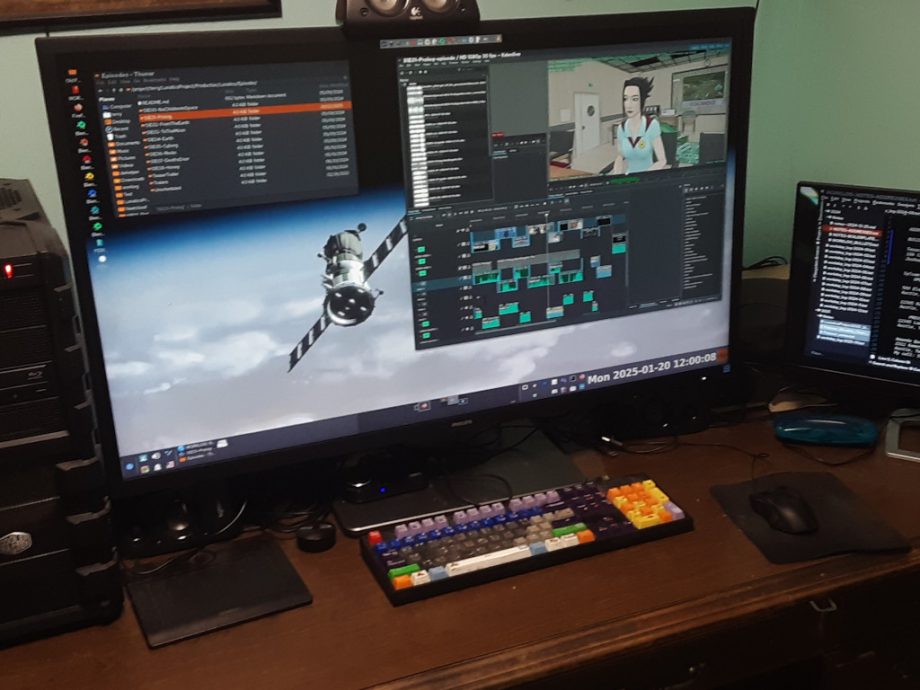I started referring to our “Virtual Studio” in a response to problems I noticed in 2015, when we first tried taking on a couple of student interns. We were acting as a studio, but we lacked a lot of the basic infrastructure we ought to have as a studio, and this was holding us back severely!
No Studio (2012-2015)
Everything went through the director, Terry Hancock. Most direction and production communications were email, relayed through his Gmail account. When we did meet to rehearse lines for the pilot and “Earth”, we did this using Skype (a non-free proprietary VOIP conferencing app that was a household name at the time).
Adapting TACTIC (2016-2018)
My initial response to this was to try to look for a unified project-management web application that would fit a studio animation model. Such a thing did exist, somewhat. Southpaw’s TACTIC application was developed for studio use; was a contender for use in the Blender Gooseberry project (which eventually produced “Cosmos Laundromat”, but has since abandoned the feature-film concept); and was under a free/open-source license (the Eclipse Public License).
I spent considerable effort working with the public version of this package, trying to adapt it to our needs. Ultimately, though, I realized this was just too big of a project for me to do on my own. I needed to instead adapt more ready-made tools.
We’ve gone through several stages on this (More detail: Virtual Studio History), but the current state as of 2025 is that the “Virtual Studio” is a collection of off-the-shelf open source web applications, managed as a YunoHost portal. Currently, this runs on a Digital Ocean “Droplet” VPS, but it has become clear that this is a
The focus from 2016 to 2018 has been infrastructure development, in the form of a “virtual studio” system that will allow team collaboration on the project. In early 2016, it became clear that the lack of such a system was holding us back, and a great deal of work has gone into this since then, as partially documented in recent Production Blog posts (particularly: “Studio Progress and Development Plans”, “Virtual Studio Addendum”, “TACTIC Replication & Backup”).
This is also one of the things we are doing that may have more community impact as we are document our entire studio effort and releasing any software we produce under open source licenses.
We’ve also been working on physical infrastructure, including a on-site server and render cluster.
Infrastructure credits:
Elsa Balderrama – 2015 Website conversion to WordPress (including creating our current WordPress theme, which was meant to keep the design similar).
Katrina Niolet – 2017 KitCAT TACTIC Qt/Python client development with creative app integration.
Terry Hancock – Hardware buildout, installation, scripts, etc. Also working on KitCAT, particularly the plugins for integration with authoring programs like Blender, Inkscape, etc.
